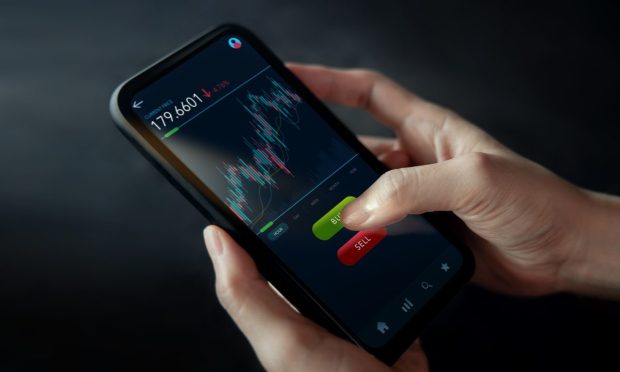Small Investors’ Lottery Mentality Tested as Crypto Crashes

The email came from a husband, father and would-be crypto investor living in a developing nation in the fall of 2020, asking a crypto journalist for advice: He had about $7,000 in U.S currency — his life savings. Should he invest it all in cryptocurrency?
A couple of questions: Could he afford to lose it? Might he need to sell it on a moment’s notice in case of an unexpected event like a medical emergency? Or at a specific time like school tuition?
The answers were pretty obvious, and the advice — no, or just a small part of it — a foregone conclusion. It was the right advice, just ask any investment advisor. It was also bad advice — just look at any price chart.
Bitcoin had been bouncing between $9,000 and $12,000 for more than a year, and the Crypto Winter was still in evidence. Six months later, his investment would have quintupled along with bitcoin. Four months after that, despite a 50% price collapse, his money would still have been tripled.
On the other hand, if he’d bought in May 2021, when BTC cracked $60,000, he’d currently be crushed, with half of his meager assets gone.
That’s the problem with crypto investing on a small, retail scale — there’s a tendency to treat crypto as a lottery you cannot lose. Many enthusiasts pointing to billionaires and famous Wall Street investors calling bitcoin a good investment don’t listen to the part where they say it should be “up to 5% of your portfolio.”
Dangerous Dealings
That’s the conundrum of crypto when it comes to retail investment: With its wild volatility, timing matters far more than with most traditional investments when it comes to retail investors. It’s why elected officials like U.S. Sen. Elizabeth Warren and the U.K.’s Advertising Standards Authority (ASA) has been on a crypto banning binge recently, slapping down organizations ranging from the Coinbase exchange to London-based Arsenal Football Club.
See: Ban Of “Misleading” Ads By UK Regulator Revives Debate Over Crypto Regulation
And it can get far worse very easily. First there’s the risk of day trading a financial product where a price change of 5% to 20% in a day is common, even among the 25 largest and most-established cryptocurrencies. Then there the wide availability of complex financial products like options and futures, compounded by the even wider availability of margin trading. Some of the bigger exchanges have backed away — FTX reduced its maximum leverage from 100x to 20x this past July — but enormous leverage is easy to find.
As are losses. On Jan. 10, crypto trading information source Coinglass recorded $343 million in liquidations — when the collateral a trader puts up to take a position in derivatives like margin trading or futures dips too far, it is sold (at the bottom of the market) to close out the position before the collateral no longer covers the debt. The same happens in decentralized finance (DeFi) borrowing platforms.
Read also: Crypto Winter II: When, How Cold, How Long
That’s why Sen. Elizabeth Warren (D-Mass.) just called DeFi “the most dangerous” part of crypto.
Learn more: Sen. Warren Calls DeFi the ‘Most Dangerous’ Part of Crypto at Senate Hearing
But How Dangerous?
That fear can be taken too far. When Coinbase went public last February, its S-1 gave a peek at the exchange’s 43 million clients. The average account size? Around $500.
In addition, worries that a collapse of bitcoin and other cryptocurrencies would destabilize the economy are overblown. Having fallen from $3 trillion last November to $1.6 trillion now, crypto has seen a bloodbath. But compare it to the 2008 sub-prime mortgage collapse: U.S. stockholders lost $8 trillion in just that first year, and homeowners saw $9.8 trillion slip away throughout the crisis.
It’s also worth remembering that those stocks represented shares in real companies that made goods and delivered services, and those houses provided a roof over their owners’ heads.
Bitcoin and similar payments-focused cryptocurrencies are backed by nothing other than the fact that people believe they have some intrinsic value. And while other cryptocurrencies like Ethereum and its wannabes generally power DApps that have actual business functions — some that show great promise and could even change the world — a great many are still in development or startup mode.
As for crypto as a payments tool, with all respect to Block — formerly Square — CEO Jack Dorsey, bitcoin is never going to be very useful when a 10% price change is a daily occurrence. Stablecoins and central bank digital currencies (CBDCs) may do that, but they are hard and impossible to invest in, respectively.
Step Right Up!
Aside from the volatility, complexity, and available leverage, there’s the hype. In the language of the crypto community, two of the most favored terms are “hodl” and “moon.”
Hodl is a deliberate misspelling of “hold” which means never sell your crypto because it is going to “moon” — as in see its price skyrocket.
On Jan. 4 — when bitcoin was nearly $10,000 higher than today — Goldman Sachs analysts predicted bitcoin would reach $100,000 within five years; crypto lender Nexo’s managing partner, Antoni Trenchev, told Fortune that would happen by June. And Googling “BTC $1 million prediction” will turn up almost 7 million hits.
So yes, there are a lot of retail investors who risk jumping into crypto investing blindly for fear of missing out, or FOMO — another popular term in the industry.
At the same time, the thing about calling out the lottery mentality is, if you invested in bitcoin before the end of 2020, you’re still way ahead, even in the depths of what’s being called a potential Crypto Winter II.
